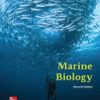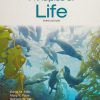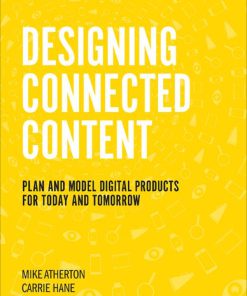Biology Today and Tomorrow With Physiology 6th Edition by Cecie Starr, Christine Evers, Lisa Starr ISBN 9780357127544 0357127544
$50.00 Original price was: $50.00.$25.00Current price is: $25.00.
Biology Today and Tomorrow With Physiology 6th Edition by Cecie Starr, Christine Evers, Lisa Starr – Ebook PDF Instant Download/Delivery: 9780357127544 ,0357127544
Full download Biology Today and Tomorrow With Physiology 6th Edition after payment

Product details:
ISBN 10: 0357127544
ISBN 13: 9780357127544
Author: Cecie Starr, Christine Evers, Lisa Starr
Biology Today and Tomorrow With Physiology 6th Edition Table of contents:
Chapter 1. Invitation to Biology
Application 1.1. The Secret Life of Earth
1.2. Life Is More Than the Sum of Its Parts
Life’s Organization
1.3. How Living Things Are Alike
Organisms Require Nutrients and Energy
Organisms Sense and Respond to Change
DNA Is Hereditary Material
1.4. How Living Things Differ
The Prokaryotes
The Eukaryotes
Organizing Information about Species
Taxonomy
Determining Relative Relatedness
1.5. The Science of Nature
Thinking about Thinking
Critical Thinking in Science
Experiments
The Scientific Method
Examples of Biology Experiments
1.6. Analyzing Experimental Results
Sampling Error
Digging Into Data
Statistical Significance
Bias
The Importance of Feedback
1.7. The Nature of Science
What Science Is
What Is Not Science
What Science Is Not
Why Science?
Summary
Self-Quiz
Critical Thinking
Unit 1. How Cells Work
Chapter 2. Molecules of Life
Application 2.1. A Big Fat Problem
2.2. Atoms
Atomic Structure
Elements
Isotopes
Why Electrons Matter
2.3. Chemical Bonds
Ionic Bonds
Covalent Bonds
Bond Polarity
2.4. Special Properties of Water
Hydrogen Bonds
Water as a Solvent
Water Stabilizes Temperature
Cohesion
2.5. Acids and Bases
Hydrogen Ions
Acids, Bases, and Buffers
2.6. The Chemistry of Biology
Organic Compounds
The Carbon Backbone
Modeling Organic Compounds
What Cells Do to Organic Compounds
2.7. Carbohydrates
Simple Sugars
Oligosaccharides
Polysaccharides
2.8. Lipids
Fatty Acids
Triglycerides
Phospholipids
Steroids
Waxes
2.9. Proteins
Protein Structure
The Peptide Bond
Closer Look
Digging Into Data
The Structure–Function Relationship
2.10. Nucleic Acids
Nucleotides
RNA and DNA
Summary
Self-Quiz
Critical Thinking
Chapter 3. Cell Structure
Application 3.1. Food for Thought
3.2. What Is a Cell?
Components of All Cells
The Surface-to-Volume Ratio
Microscopy
Cell Theory
3.3. Cell Membrane Structure
The Lipid Bilayer
Fluid Mosaic Model
Proteins Add Function
3.4. Prokaryotic Cells
Structural Features
Biofilms
3.5. Eukaryotic Organelles
The Nucleus
Mitochondria
Chloroplasts
The Endomembrane System
Closer Look
Digging Into Data
3.6. Elements of Connection
Cytoskeletal Elements
Extracellular Matrix
Cell Junctions
Closer Look
3.7. The Nature of Life
Summary
Self-Quiz
Critical Thinking
Chapter 4. Energy and Metabolism
Application 4.1. A Toast to Alcohol Dehydrogenase
4.2. Life Runs on Energy
Thermodynamics
Chemical Bonds Hold Energy
Work
Energy Transfers Are Inefficient
4.3. Energy in the Molecules of Life
Chemical Reactions
Bond Energy
Storing and Retrieving Energy in Organic Molecules
4.4. Enzymes and Metabolic Pathways
The Need for Speed
The Active Site
Environmental Effects on Enzyme Activity
Molecular Effects on Enzyme Activity
Metabolic Pathways
Digging Into Data
4.5. Diffusion across Membranes
Diffusion of Solutes
Tonicity and Osmosis
Turgor Pressure
4.6. Membrane Transport Mechanisms
Transport Proteins
Passive Transport
Active Transport
Closer Look
Vesicle-Based Transport
Summary
Self-Quiz
Critical Thinking
Chapter 5. Photosynthesis
Application 5.1. A Burning Concern
5.2. Overview of Photosynthesis
Storing Energy in Sugars
Stages of Reactions
Sites of Photosynthesis
Stomata
5.3. Light Energy
Visible Light
Photosynthetic Pigments
Fall Colors
5.4. Light-Dependent Reactions
Photosystems
The Noncyclic Pathway
Closer Look
Photosynthesis in the Dark
5.5. Light-Independent Reactions
The Calvin–Benson Cycle
Efficiency of Sugar Production
Digging Into Data
Summary
Self-Quiz
Critical Thinking
Chapter 6. Releasing Chemical Energy
Application 6.1. Risky Business
6.2. Carbohydrate Breakdown Pathways
Overview of the Pathways
Glycolysis: Sugar Breakdown Begins
6.3. Aerobic Respiration
Aerobic Respiration Continues
Electron Transfer Phosphorylation
Overall ATP Yield of Aerobic Respiration
6.4. Fermentation
Alcoholic Fermentation
Lactate Fermentation
6.5. Food as a Source of Energy
Closer Look
Oxidizing Molecules in Food
The Ketogenic Diet
Digging Into Data
Summary
Self-Quiz
Critical Thinking
Unit 2. Genetics
Chapter 7. DNA Structure and Function
Application 7.1. A Hero Dog’s Golden Clones
7.2. The Function of DNA
Killer Bacteria and the Stupid Molecule
Properties of a Hereditary Material
Digging Into Data
DNA: The Molecule of Heredity
7.3. The Structure of DNA
Building Blocks of DNA
Discovery of DNA Structure
Anatomy of a DNA Molecule
DNA Sequence
7.4. Eukaryotic Chromosomes
DNA Packaging
Closer Look
The Chromosome Number
Autosomes and Sex Chromosomes
7.5. DNA Replication
The Process of DNA Synthesis
Closer Look
PCR: DNA Replication in a Tube
7.6. Mutations
Mutations: DNA Sequence Changes
Replication Errors
UV Light
Ionizing Radiation
Chemicals
Not All Mutations Are Dangerous
Summary
Self-Quiz
Critical Thinking
Chapter 8. Gene Expression and Control
Application 8.1. Ricin, RIP
8.2. DNA, RNA, and Gene Expression
Genes
Comparing DNA and RNA
Information Flow
8.3. Transcription: DNA to RNA
Comparing Transcription and DNA Replication
Coding and Noncoding Strands
RNA Synthesis
A New RNA Is Modified
8.4. RNAs in Translation
The Message in a Messenger RNA
The Translators: rRNA and tRNA
8.5. Translation: RNA to Protein
Closer Look
Translation in Eukaryotic Cells
Digging Into Data
How RIPs Interfere with Translation
8.6. Products of Mutated Genes
Harmful Mutations Are Rare
Base-Pair Substitutions
Deletions and Insertions
Mutations in Regulatory Sites
8.7. Control of Gene Expression
Molecular Switches
Why Cells Control Gene Expression
Master Regulators in Embryonic Development
DNA Methylations
Summary
Self-Quiz
Critical Thinking
Chapter 9. How Cells Reproduce
Application 9.1. Henrietta’s Immortal Cells
9.2. Multiplication by Division
The Cell Cycle
How Mitosis Maintains the Chromosome Number
Closer Look
Why Cells Divide by Mitosis
9.3. Mitosis and Cytoplasmic Division
Stages of Mitosis
Cytoplasmic Division
9.4. Cell Cycle Control
Checkpoints
Losing Control
Pathological Mitosis
Digging Into Data
The Role of Telomeres
9.5. Sex and Alleles
Introducing Alleles
On the Advantages of Sex
9.6. Meiosis in Sexual Reproduction
Stages of Meiosis
Closer Look
Crossing Over
Digging Into Data
From Gametes to Offspring
Summary
Self-Quiz
Critical Thinking
Chapter 10. Patterns of Inheritance
Application 10.1. Menacing Mucus
10.2. Tracking Traits
Early Thoughts about Heredity
Mendel’s Pea Plants
Closer Look
Inheritance in Modern Terms
10.3. Mendelian Inheritance Patterns
Segregation of Genes into Gametes
Independent Assortment of Genes into Gametes
10.4. Non-Mendelian Inheritance
Incomplete Dominance in Snapdragons
Codominance and Blood Type
Pleiotropy and Marfan Syndrome
Digging Into Data
Polygenic Inheritance
10.5. Complex Variation in Traits
Nature and Nurture
Examples of Environmental Effects on Phenotype
Continuous Variation
10.6. Human Genetic Analysis
Studying Inheritance in Humans
Genetic Disorders and Abnormalities
Discovering a Breast Cancer Gene
10.7. Inheritance Patterns in Humans
The Autosomal Dominant Pattern
The Autosomal Recessive Pattern
The X-Linked Recessive Pattern
10.8. Changes in Chromosome Number
Polyploidy and Aneuploidy
Down Syndrome
Sex Chromosome Aneuploidy
10.9. Genetic Testing
Tests for Newborns
Tests for Prospective Parents
Prenatal Tests
Reproductive Interventions
Summary
Self-Quiz
Critical Thinking
Chapter 11. Biotechnology
Application 11.1. Personal Genetic Testing
11.2. Working with DNA
Restriction Enzymes
Recombinant DNA
Closer Look
DNA Cloning
PCR
11.3. Studying DNA
Sequencing
The Human Genome Project
Genomics
DNA Profiling
11.4. Genetic Engineering
GMOs
Modified Microorganisms
Designer Plants
Digging Into Data
Biotech Barnyards
11.5. Editing Genomes
Gene Therapy
CRISPR Gene Editing
Summary
Self-Quiz
Critical Thinking
Unit 3. Evolution and Diversity
Chapter 12. Evidence of Evolution
Application 12.1. Reflections of a Distant Past
12.2. Old Beliefs, New Discoveries
The Great Chain of Being
New Evidence
New Ideas
12.3. Natural Selection
Darwin and the HMS Beagle
Great Minds Think Alike
12.4. Fossil Evidence
Fossils
Digging into Data
The Fossil Record
Finding a Missing Link
Radiometric Dating
12.5. Changes in the History of Earth
Continents Drift
Plate Tectonics
The Geologic Time Scale
Closer Lok
12.6. Evidence in Form and Function
Homologous Structures
Analogous Structures
12.7. Molecular Evidence
Similarities in DNA and Proteins
Similarities in Development
Summary
Self-Quiz
Critical Thinking
Chapter 13. Processes of Evolution
Application 13.1. Farming Superbugs
13.2. Alleles in Populations
Variation in Shared Traits
An Evolutionary View of Mutations
Allele Frequency
13.3. Patterns of Natural Selection
Digging Into Data
Directional Selection
Stabilizing Selection in the Sociable Weaver
Disruptive Selection in the Black-Bellied Seedcracker
13.4. Natural Selection and Diversity
Survival of the Sexiest
Maintaining Multiple Alleles
13.5. Nonselective Evolution
Genetic Drift
Population Bottlenecks
The Founder Effect
Inbreeding
Gene Flow
13.6. Speciation
Closer Look
Reproductive Isolation
Allopatric Speciation
Sympatric Speciation
13.7. Macroevolution
Macroevolutionary Patterns
Evolutionary Theory
13.8. Phylogeny
Reconstructing Evolutionary History
Applications
Summary
Self-Quiz
Critical Thinking
Chapter 14. Prokaryotes, Protists, and Viruses
Application 14.1. The Human Microbiota
14.2. Origin of Cellular Life
Conditions on the Early Earth
The Building Blocks of Life
Origin of Metabolism
Origin of Genetic Material
Origin of Cell Membranes
Defining Plausible Pathways
14.3. Early Life
The Last Common Ancestor of All Life
An Early Divergence
Fossil Evidence of Prokaryotic Cells
The Great Oxygenation Event
14.4. Modern Bacteria and Archaea
Structural Traits
Reproduction
Gene Exchanges
Ecology and Diversity of Bacteria
Bacteria and Human Health
Antibiotics
The Archaea
14.5. Origin of Eukaryotes
Fossil Eukaryotes
A Mixed Heritage
The Endosymbiont Hypothesis
14.6. Protists
Cell Structure
Free-Living Aquatic Cells
Algae
Protists in the Human Body
Digging Into Data
Slime Molds
Protist Relatives of Animals
14.7. Viruses
Viral Structure
Viral Replication
Closer Look
Viruses and Human Health
Viral Mutation and Recombination
Summary
Self-Quiz
Critical Thinking
Chapter 15. Plants and Fungi
Application 15.1. Fungal Threats to Crops
15.2. Plant Traits and Evolution
Life Cycles
Structural Adaptations
Reproduction and Dispersal
15.3. Nonvascular Plants
Moss Life Cycle
Closer Look
Diversity and Ecology
15.4. Seedless Vascular Plants
Ferns
Closer Look
Horsetails and Lycophytes
Coal Forests
15.5. Rise of the Seed Plants
Seed Formation
Seed Dispersal
Wood Production
15.6. Gymnosperms
Conifers
Cycads and Ginkgos
15.7. Angiosperms—Flowering Plants
Floral Structure and Function
Flowering Plant Life Cycle
Angiosperm Success
Monocots and Eudicots
Ecological and Economic Importance
15.8. Fungal Traits and Diversity
Structure of a Fungus
Lineages and Life Cycles
15.9. Ecological Roles of Fungi
Decomposers
Fungal Infections of Plants
Digging into Data
Fungal Infections of Animals
Fungal Infections in Humans
Fungal Partnerships
Human Uses of Fungi
Summary
Self-Quiz
Critical Thinking
Chapter 16. Animal Evolution
Application 16.1. Medicines from the Sea
16.2. Traits and Evolutionary Trends
Animal Origins
Evolutionary Tree of Animals
Early Animals
Cambrian Adaptive Radiation
16.3. Sponges and Cnidarians
Sponges
Cnidarians
16.4. Flatworms, Annelids, and Mollusks
Flatworms
Annelids
Mollusks
16.5. Roundworms and Arthropods
Roundworms
Arthropods Traits
Digging Into Data
Arthropod Lineages
16.6. Echinoderms and Chordates
Echinoderms
Chordates
Invertebrate Chordates
Vertebrate Traits and Trends
16.7. Fishes and Amphibians
Jawless Fishes
Jawed Fishes
Amphibians
Declining Amphibian Populations
16.8. Escape from Water—Amniotes
Reptiles
Mammals
16.9. Primate and Human Evolution
Primate Origins and Diversification
Early Hominins
Early Humans
Homo Sapiens
Closer Look
Neanderthals and Denisovans
Summary
Self-Quiz
Critical Thinking
Unit 4. Ecology
Chapter 17. Population Ecology
Application 17.1. Managing Canada Geese
17.2. Characteristics of Populations
Population Size and Density
Population Distribution
Age Structure
Collecting Population Data
Digging Into Data
17.3. Models of Population Growth
Exponential Growth
Density-Dependent Limiting Factors
Carrying Capacity
Closer Look
Logistic Growth
Density-Independent Factors
Combined Effects of Limiting Factors
Human Effects on Carrying Capacity
17.4. Life History Patterns
Biotic Potential
Describing Life Histories
Adaptive Value of Life History Traits
Opportunistic Life History
Equilibrial Life History
Predation and Life History Evolution
Effects of Humans as Predators
17.5. Human Populations
Population Size and Growth Rate
Fertility Rates and Future Growth
Effects of Industrial and Economic Development
Summary
Self-Quiz
Critical Thinking
Chapter 18. Communities and Ecosystems
Application 18.1. Invasion of the Red Imported Fire Ants
18.2. Community Structure
Nonbiological Factors
Biological Factors
18.3. Direct Species Interactions
Interspecific Competition
Predation
Herbivory
Parasitism
Biological Pest Control
Commensalism
Mutualism
18.4. How Communities Change
Ecological Succession
The Role of Disturbance
Species Losses or Additions
18.5. The Nature of Ecosystems
Food Chains and Webs
Energy Capture and Transfers
Biological Accumulation and Magnification
18.6. The Water, Nitrogen, and Phosphorus Cycles
The Water Cycle
The Phosphorus Cycle
Closer Look
The Nitrogen Cycle
Nutrient Pollution and Algal Blooms
18.7. The Carbon Cycle and Climate Change
The Carbon Cycle
Digging Into Data
Increasing Atmospheric Carbon Dioxide
Ocean Acidification
The Greenhouse Effect
Global Climate Change
Summary
Self-Quiz
Critical Thinking
Chapter 19. The Biosphere and Human Effects
Application 19.1. Decline of the Monarchs
19.2. Climate and the Distribution of Biomes
Solar Energy and Latitude
Air Circulation and Rainfall
Ocean Currents
Distribution of Biomes
19.3. Forest Biomes
Tropical Forests
Temperate Deciduous Forests
Coniferous Forests
Deforestation
19.4. Grasslands, Chaparral, Deserts, and Tundra
Fire-Adapted Biomes
Desert
Desertification
Tundra
19.5. Aquatic Ecosystems
Streams and Rivers
Lakes
Nearshore Marine Ecosystems
Coral Reefs
The Open Ocean and Seafloor
19.6. Global Effects of Pollution
Talking Trash
Digging Into Data
Acid Rain
Destruction of the Ozone Layer
Global Climate Change
19.7. Conservation Biology
The Extinction Crisis
The Value of Biodiversity
Setting Priorities
Protection and Restoration
Reducing Human Impacts
Summary
Self-Quiz
People also search for Biology Today and Tomorrow With Physiology 6th Edition:
biology advanced topics
biology today and tomorrow with physiology 6th edition
biology today and tomorrow without physiology 6th edition
biology today and tomorrow without physiology 6th edition pdf
biology events near me
Tags: Cecie Starr, Christine Evers, Lisa Starr, Biology Today, Physiology
You may also like…
Biology and other natural sciences - Biology
Biology and other natural sciences - Biology
Chemistry - Chemistry - General & Miscellaneous
Business & Economics - Small Business
Medicine - Pediatrics
Biology and other natural sciences - Biology
What Is Life A Guide to Biology with Physiology Fifth Edition Phelan Jay
Biology and other natural sciences - Biology
Biology The Unity and Diversity of Life 14th Edition Cecie Starr
Computers - Computer Business & Culture
Engineering - Social & Cultural Aspects of Technology











